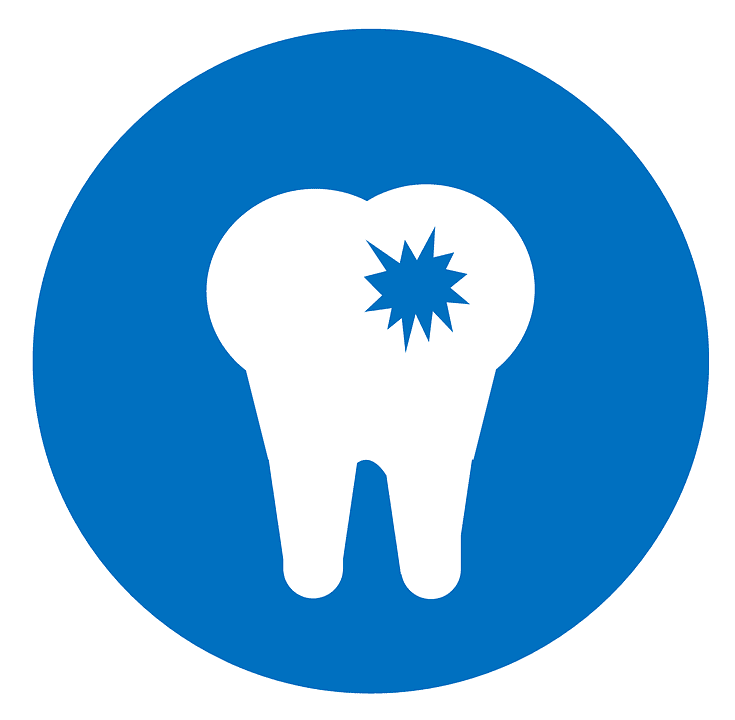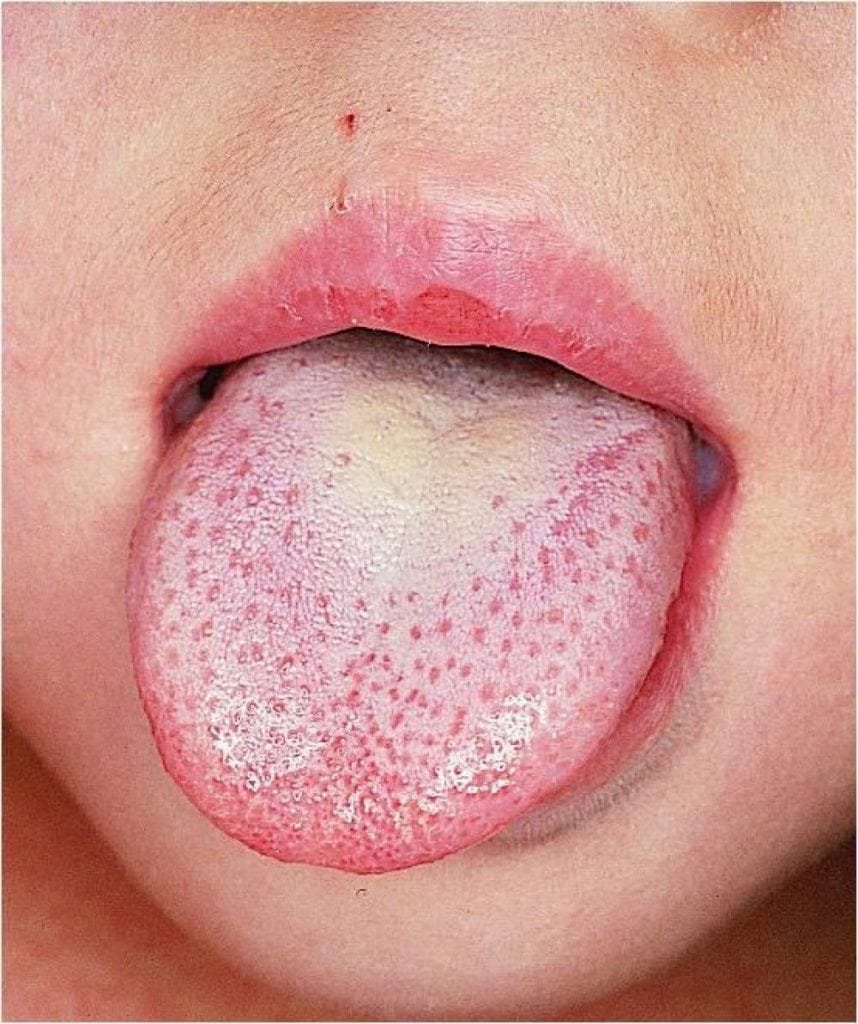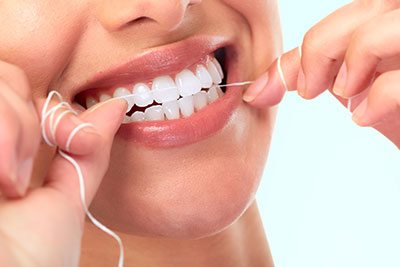Dentist in Provo

At East Mountain Dental, we are proud to be a dentist in Provo, Utah. Our dentists, Dr. Hamilton and Dr. Roberts, offer a wide range of dental services to the people of Provo and surrounding areas. We offer a few different services, including cosmetic, restorative, and preventative dentistry. Cosmetic Dentistry in Provo, Utah Dr. Hamilton and Dr. Roberts are proud to provide cosmetic dentistry in Provo, Utah. We offer dental veneers, dental bonding, and teeth whitening for our patients. Whether you are looking to enlarge, straighten, or whiten your smile, we can help you. Dental Veneers Dental veneers are often referred to as shells that sit on the front of the tooth. Dental veneers can be made of porcelain or composite resin, also called a tooth-colored material. Since a dental veneer can be any shape or size, many patients use dental veneers to straighten, whiten, and enlarge their smiles. Teeth Whitening As a dentist in Provo, Utah, we offer teeth whitening to our patients. Through Opalescence, we offer both in-office and at-home teeth whitening solutions. Professional teeth whitening is more beneficial than over-the-counter solutions because professional teeth whitening uses a more robust whitening solution and a more precise application process. Your dentist will make you a custom tray for at-home whitening, which you will wear once per day for up to 10 days. You can achieve your dream smile in one or two 20 minute whitening appointments for in-office whitening. Dental Bonding Like dental fillings, dental bonding uses a composite resin or a tooth-colored material to mold the tooth. If you have a chipped or misshapen tooth, dental bonding can help smooth out and straighten the edges of your smile. Restorative Dentistry Another service we offer as a dentist in Provo is restorative dentistry. If you have a dental concern, Dr. Hamilton or Dr. Roberts can help you restore your smile with one of our many treatment options. From dental fillings to root canals to dental implants, we can help you convert your smile. Dental Fillings If you have tooth decay, your dentist may recommend a dental filling. To get a dental filling, your dentist will first remove the decay to create a cavity in your tooth. Next, he will fill the hole with a composite resin, also known as a tooth-colored filling. The goal of removing the decay and filling the cavity is to prevent future tooth decay from spreading and rid your tooth of harmful bacteria. Root Canals If bacteria and decay enter the tooth’s center, you may need a root canal. This procedure is similar to a dental filling, where your dentist will remove the infected part of the tooth and replace it with composite material. Many patients are worried about discomfort during a root canal procedure. Most patients report that the most pain they have is before the process from the infection because they receive sedation medication to make them comfortable during and after the procedure. Dental Implants Some infected teeth are not salvageable. In this case, the best way to restore a smile may be to extract the tooth and replace it with a dental implant. Unlike a dental bridge, which only returns the top of the tooth, a dental implant replaces the entire tooth from its root to the crown. Preventative Dentistry One of the cornerstones of dentistry is preventative dentistry. As a dentist in Provo, we stress the importance of preventive dentistry because it can keep our patients from experiencing dental concerns. The first part of preventative dentistry is to practice good oral hygiene at home. We recommend that our patients brush, floss, and use mouthwash twice a day. Next, we recommend that our patients visit East Mountain Dental every six months for a dental cleaning and exam. Our dentist can look for potential dental concerns during this visit, and the team can remove hard-to-get plaque and tartar from your smile. Other preventative dentistry services we offer include dental sealants and fluoride treatments. As a dentist in Provo, we work hard to provide high-quality care for all of our patients in a comfortable environment. For more information about us, a dentist in Provo, or to schedule an appointment, call our office today.
Facts and Myths about Cavities

By the time we are able to brush our teeth on our own, most of us can remember being told about cavities. If you have ever needed a filling or other dental work, you may know a bit more about cavities than someone who is yet to have the experience. However, there are still some misconceptions about how we get them and what you should do about a cavity. Here are some common myths that surround cavities and the reality behind these misconceptions: Myth: If my teeth don’t hurt, nothing is wrong. Fact: By the time a tooth begins to hurt, it means the cavity and tooth decay has gone deep into the tooth and is now irritating the nerve. The longer you leave an issue, the more complex and expensive the treatment will be. Therefore, regular checkups are necessary to catch dental issues before they become extensive. Waiting for there to be an issue in the mouth before going to the dentist can mean the difference between a simple filling and a root canal. Myth: Sugar-free soda can’t cause cavities. Fact: Sugar is a huge contributor to the cause of cavities, as it creates a food source for harmful bacteria in the mouth, but it is not the only contributor. Anything that makes your mouth more acidic, such as diet sodas, can cause erosion. The harmful bacteria metabolize the sugar or acids left on your teeth and excrete lactic acid that creates small holes in tooth enamel. Myth: With good dental care, teeth can repair their own tooth enamel (remineralisation). Fact: Experts have said that teeth can replace some of the minerals that its enamel has lost. This process is called remineralisation and can slow or even stop decay. However, once bacteria and decay get through that enamel, the damage is done, and the erosion can not be reversed. The cavity has to be treated or it will continue to erode away at the tooth until it reaches the nerve. The nerve will eventually die. Depending on how long you leave a cavity, you could be looking at needing a root canal or a tooth removal. Myth: A filling is forever and can not get cavities. Fact: Although fillings can last for over a decade, they do eventually wear and break down. Tooth decay can not affect a filling but it can set in to the tooth around the edges of a filling or underneath the filling if it is broken. Myth: Cavities are for kids Fact: Anyone who has poor dental hygiene and consumes a lot of sugary food stuffs is at risk of developing cavities. Saliva is a natural buffer to all the acids in your mouth, so adults who smoke or take medications that cause dry mouth are at an even greater risk, as they have low saliva production. There is always a risk of developing a cavity, whether you are 6 or 76 years old. The important thing is to look after your dental health through daily care and regular dentist visits. At East Mountain Dental, you can be sure to get great dental care. Contact our Provo office today.
Why is My Tongue White?

What is the White Substance on my Tongue? A healthy tongue is pink looking and moist or it may have a thin white coating on its surface. The surface of your tongue should have small bumps all over, called papillae. Our taste buds sit on these bumps. There are a few other surface textures that are considered normal but this is your classic or textbook tongue. However, there are many people who struggle with a surface texture that looks more like a blanket of white, or maybe they have developed patches of white under their tongue or on their cheeks. This is not a normal or healthy tongue or mouth. White tongue conditions Oral thrush or candidiasis is a yeast infection of the mouth caused by the fungus Candida. White patches develop on the tongue and throat that have a cottage cheese look and feel to them. If you scrape the substance off your tongue, you will expose a red patch. This infection is most likely to occur after a treatment of antibiotics as there is an unbalance of bacteria in the mouth. Other factors that can cause oral thrush include smoking, poor oral hygiene, dentures that don’t fit properly, dry mouth, diabetes, or chemotherapy. If you think you have oral thrush you need to see your doctor immediately as it will only worsen if left untreated. Oral thrush is normally treated with a 7 to 14 day course of antifungal medication. Leukoplakia is the formation of white patches inside the mouth and on the tongue due to excessive cell growth. The most common cause is tobacco. It is extremely important to visit your dentist to have them determine the cause of the Leukoplakia as it can be a precursor to oral cancer. Oral lichen planus looks like a spider web of raised white lines on your tongue or the inside of your cheeks. It is normally caused by an autoimmune response and is a chronic inflammatory condition. The condition should be monitored, however, it normally disappears on its own. In very rare cases it can lead to oral cancer. Risk factors for the above and other tongue conditions include smoking, alcohol, poor diet, poor oral hygiene, a weak immune system or viral infections. To keep your tongue healthy, it is recommended to brush your tongue before brushing and flossing your teeth. It is most effective in the mornings. Brush your tongue from the back to the front, rinsing the brush after each stroke to avoid placing bacteria scraped off the tongue back in the mouth. Any discomfort, sores, swelling, as well as color, texture or taste changes in the mouth or on the tongue should be monitored and seen to by a dentist or doctor.
The Fuss about Floss

Every dental hygiene article will tell you that an adequate oral hygiene regime includes brushing your teeth twice a day and flossing at least once a day. However, according to data from the latest National Health and Nutrition Examination Survey, which was compiled in 2016, it states 32.4 % of American adults over the age of 30 never floss. The results also showed that 37.3 % of these adults floss but not everyday; and only 30.3 % floss on a daily basis. Other interesting findings include more men failed to floss when compared to women and low-income participants are less likely to floss than those in higher income brackets. But why do these statistics matter? What is the fuss about flossing? For one thing, these statistics are an indicator of why the Center of Disease Control finds a high prevalence of gum diseases in America, especially in the Southern States. What is gum disease? Gum disease in its most common form is called gingivitis. The symptoms include tender and swollen gums that bleed easily when brushed. Gingivitis can be caused by the failure to maintain oral hygiene. When someone neglects their oral hygiene, food particles can get stuck between the teeth and mix with saliva and bacteria in the mouth. This mixture forms plaque, which can harden into tartar that can not be removed through normal toothbrushing. The bacteria in plaque and tartar create acids that eat into our tooth enamel and create holes called cavities. Bacterial infection and tooth decay fester in cavities and can affect the gums, causing gingivitis. If left untreated, gingivitis can develop into a more advanced stage of gum disease, which can cause nearly irreversible damage to the gums, teeth and jawbone. Flossing ensures that food particles do not get stuck between our teeth, where our toothbrush can’t reach, and cause cavities. Preventing gingivitis is also a preventative measure against a number of other health issues, such as respiratory diseases, which can be caused by bacteria in the mouth affecting the lungs. Tips for flossing: Floss before bedtime as this is when you will get the best result as it is after you have eaten for the day. Start with 18 inches of floss and work it around each middle finger until you have around two inches. Hold the floss taut between your thumb and index finger and gently move it up and down between your teeth. Carefully glide the floss around the base of each tooth, going beneath the gum line. Use new sections of floss for each new tooth. Remove floss from your teeth by mimicking the same up and down motion.
